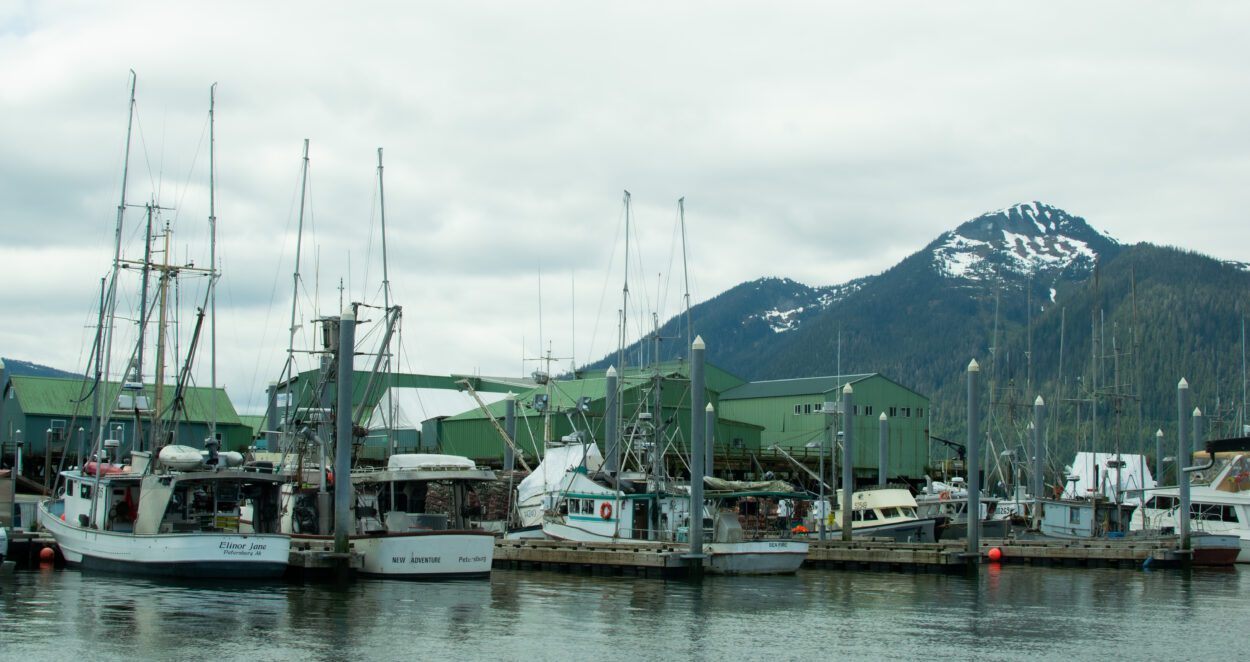
Commercial trolling for Southeast king salmon closed for the season in July, and will not reopen this month. That marks the second summer in a row their season has ended before they could catch the all of their yearly king allocation under an international agreement. Now, the trade group representing them — the Alaska Trollers Association — is outraged.
Southeast trollers have around 15,000 kings left in their annual allocation. That’s the number of kings trollers get to catch under an agreement between the United States and Canada known as the Pacific Salmon Treaty.
The trollers caught most of their allocation — 83%, or 82,000 fish — during the first and longest opener in July. Typically, the rest of the allocation would be caught in a mid-August opening. But that second opening won’t be happening.
Coincidentally, the Southeast Alaska sport fishery blew past its allocation of kings by almost the same amount the trollers lost — about 14,000 fish.
Grant Hagerman is a biologist with the Alaska Department of Fish and Game, which manages both king salmon fisheries. He said that this was not a management error. The sport fishery’s harvest grows or shrinks depending on the abundance of kings. Fish and Game establishes their sport fishery regulations at the beginning of each season based on how many Southeast kings they think are in the water. Fish and Game doesn’t change those rules until the beginning of the next season.
That plan is designed with the idea that the sport fishery will exceed their allocation in some years, but lag behind in others. So, trollers get to catch the overage, but they also have to absorb the underage sometimes.
That’s not much comfort for some trollers, according to Amy Daugherty, Executive Director of the Alaska Trollers Association, or ATA. She said she can’t overstate how much it hurt her gear group to lose almost a fifth of their annual king harvest. She said something’s got to change.
“It truly is, potentially the demise of the troll industry, and will definitely impact our processors and small communities throughout Southeast Alaska,” said Daugherty. “We do support tourism. We also support some kind of limitation on the harvest of that sector. We don’t think that’s unreasonable. We want to stay in business.”
The question of how many kings go into whose hands is decided by a 2022 Board of Fish deal that was struck between the region’s three stakeholder groups: resident sport, guided sport, and commercial trollers — which includes the ATA. Since then, the trollers have had to prematurely tie up their boats two years in a row when the total king allocation for all groups was reached.
Shortly after the Alaska Department of Fish and Game announced that the troll season would be cut short, the ATA took a swipe at the department and the Southeast guided sport fishing industry for shortening their season.
In a written statement titled, “Fishing Tourists Cause Headaches for Locals,” ATA said Fish and Game is: “(…) trying to implement laissez-faire management to placate the charter and lodge businesses, (…) destroying the ability of our Alaska trollers to fill orders to our fish-loving customers. Accelerated catches by tourists are appropriating fish away from our long-time small boat fisheries and processors. If our local small boat fishermen go out of business, the economic resilience of our isolated island communities will be diminished and destabilized region-wide.”
Representatives for the trollers and sport fishermen said they’re submitting proposals for a more equitable distribution system — possibly separating the allocation between the sport and troll fisheries — to the Alaska Board of Fish, which is scheduled to meet in Ketchikan in January.











